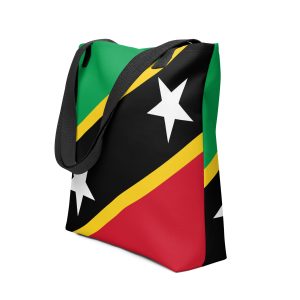Pre-Columbian Era: Indigenous Settlement (circa 3000 BCE–1493 CE)
Long before European colonization, St. Kitts and Nevis were inhabited by various indigenous peoples, including the Ciboney, Taino, and Kalinago. These groups had rich cultures, complex societies, and established trade networks that spanned the Caribbean. Their presence shaped the islands’ early history and left a lasting impact on the region.
Early Inhabitants: The Ciboney
The Ciboney, also known as the Guanahatabey, were among the earliest settlers in the Caribbean, arriving around 3000 BCE. As hunter-gatherers, they lived along the coast, relying on fishing and foraging for survival. Archaeological evidence, such as stone tools and pottery fragments, provides insight into their presence on St. Kitts and Nevis. Though their society was less developed compared to later groups, the Ciboney established the first known communities on the islands .
The Taino Civilization
Around 1000 BCE, the Taino, an Arawakan-speaking people, settled in St. Kitts and Nevis. Skilled in agriculture, the Taino cultivated crops like cassava, maize, and sweet potatoes. They lived in organized villages led by caciques (chiefs) and built a stratified society. Known for their craftsmanship, the Taino produced intricate pottery and stone carvings, while their spiritual life revolved around zemi worship, which honored nature and ancestral spirits .
The Taino engaged in extensive trade with other Caribbean islands and South America, exchanging goods such as pottery and food. Their culture and language left a lasting influence on the region, even after the arrival of Europeans .
The Kalinago (Caribs)
By the time Christopher Columbus arrived in 1493, the Kalinago, also known as the Caribs, had largely displaced the Taino and dominated St. Kitts and Nevis. Known for their canoe-building skills and seafaring abilities, the Kalinago were fierce warriors who resisted European colonization. Unlike the Taino, their society was more egalitarian, with warriors holding significant power .
The Kalinago practiced slash-and-burn agriculture, growing crops such as cassava, yams, and plantains. They supplemented their diet with fishing and hunting, and their trading networks extended across the Caribbean. Their decentralized communities reflected their independent and resilient way of life .
Indigenous Trade Networks and Culture
The indigenous peoples of St. Kitts and Nevis were part of broad trade networks connecting them to other Caribbean islands and South America. Goods like pottery, woven materials, and food were exchanged, fostering cultural interaction and communication between different groups. The Kalinago, in particular, were known for their pottery-making skills and traded goods like cotton and cassava flour, strengthening alliances and maintaining connections across the region .
End of the Pre-Columbian Era
The Pre-Columbian Era in St. Kitts and Nevis came to an end with the arrival of Europeans. In 1493, Columbus’s second voyage to the Americas marked the beginning of European exploration in the Caribbean. Over the following decades, the indigenous populations on the islands, like many others in the region, were decimated by diseases, warfare, and enslavement, leading to the collapse of their societies and the colonization of the islands by European powers .
Conclusion
The Pre-Columbian Era in St. Kitts and Nevis was marked by the presence of vibrant indigenous cultures, particularly the Taino and Kalinago, whose societies helped shape the islands’ early history. Though the arrival of Europeans brought an end to this era, the legacy of these indigenous peoples remains visible today in archaeological sites and cultural influences that continue to echo across the Caribbean.
Historical Overview of St. Kitts and Nevis
Colonial History
Significant Historical Events
Pre-Columbian Era
European Exploration and Colonization
- 1493 – Christopher Columbus’s Second Voyage
- 1623 – Establishment of the First European Settlement
- 1626 – Kalinago Massacre
Colonial Era
- 1650s – Expansion of Sugar Plantations
- 1666 – French Occupation of St. Kitts
- 1706 – Nevis Raid
- 1783 – Treaty of Paris
20th Century Developments
- 1932 – Founding of the St. Kitts Workers’ League
- 1952 – Universal Adult Suffrage
- 1967 – Associated Statehood
- 1978 – Death of Sir Robert Llewellyn Bradshaw
Independence and Modern Developments
- 1983 – Independence
- 1998 – Nevis Secession Referendum
- 2005 – Hurricane Impact
- 2015 – Team Unity Government
Disclaimer
The information provided on stkittsnevisflag.com is for general informational purposes only. While we strive to provide accurate and up-to-date information, we make no warranties or representations of any kind, express or implied, about the completeness, accuracy, reliability, suitability, or availability of the information contained on this website. Any reliance you place on such information is therefore strictly at your own risk.
stkittsnevisflag.com will not be liable for any loss or damage, including without limitation, indirect or consequential loss or damage, or any loss or damage whatsoever arising from loss of data or profits arising out of, or in connection with, the use of this website.
We encourage all users to verify any information found on this site before relying on it. If you find any incorrect or outdated information, please contact us at info@stkittsflag.com so we can make the necessary corrections.




